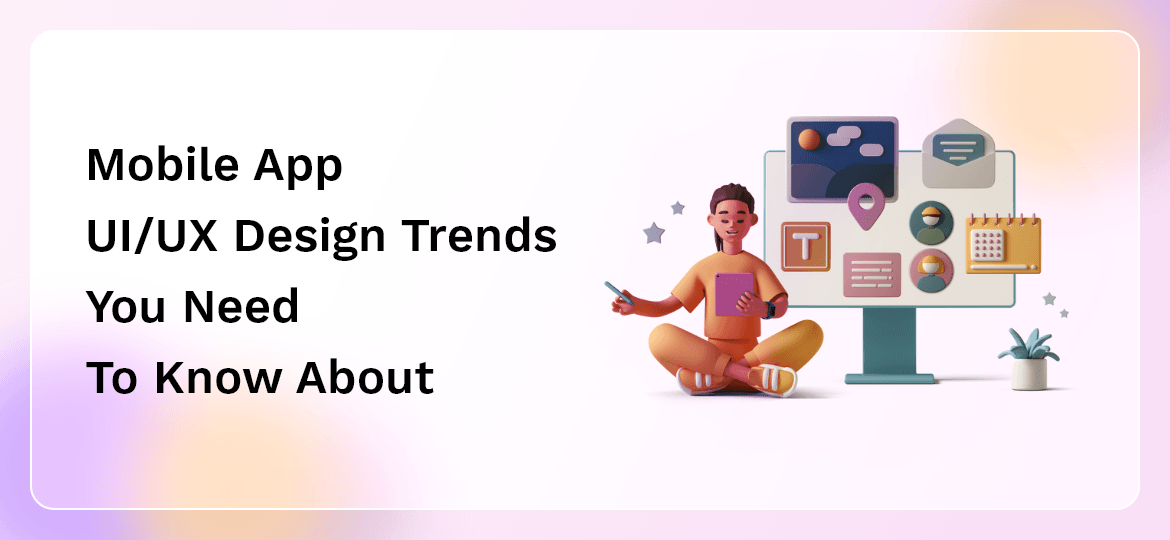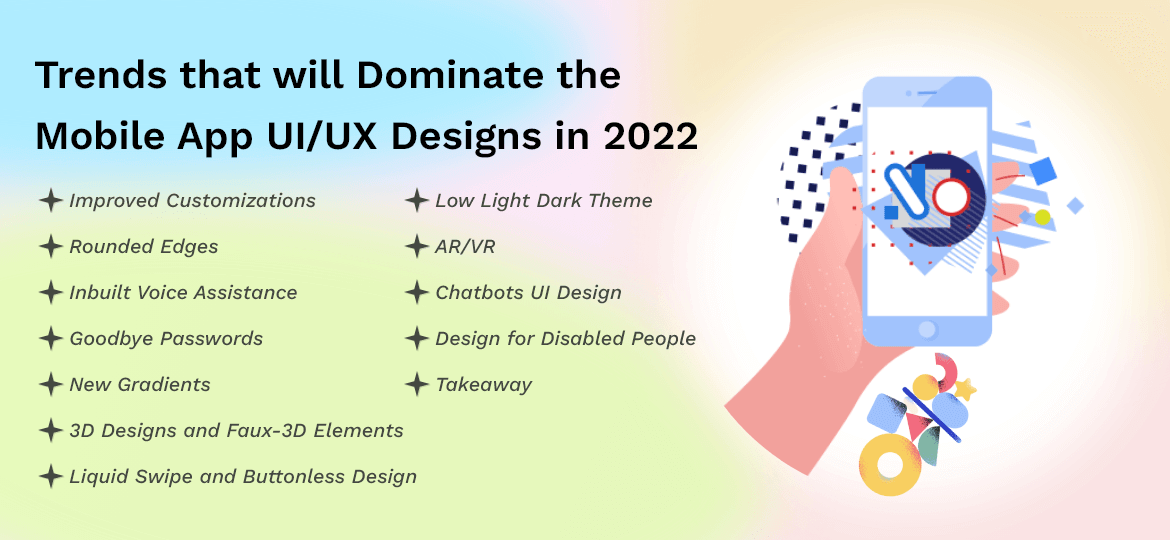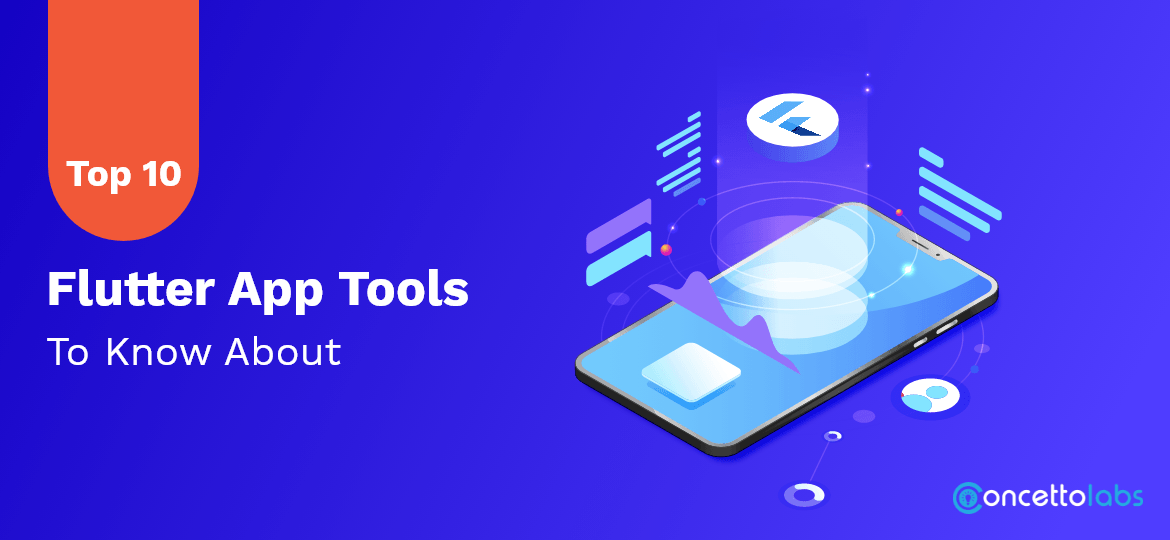
The year 2022 will be witnessing one of the largest UI/UX makeovers, thanks to designers who have learned the change in user behavior over the past few years.
Technological advancements are the expected metamorphosis we wish to see every year considering we live in times where devices get upgraded very quickly. Today, brands can no longer afford to stick to the ‘same old’ and legacy-based operations if they want to beat their competitors. To provide top-notch quality in technological devices and services, an organization itself must run on better technologies that can help them come up with solutions to simplify life as their customers know it. Be it a website, software, or a gadget. The tech they run on is not the same as what was trending a year ago.
As global consumers use these apps, it is an organization’s job to bring in newer upgrades to enhance the overall user experience with better UI and UX. Such changes are usually mass-adopted by brands looking at the biggest trends for the year. The year 2022 is no different, with many new trends that will be seen dominating the designers’ priority. Curious to know which ones make the top list? This blog has got you covered! Read on to know more.
Trends that will Dominate the Mobile App UI/UX Designs in 2022

Improved Customizations
We will be seeing a greater level of mobile app customizations in 2022. It has become necessary to have a tailored UX in the process of app development. The use of Machine Learning and Artificial Intelligence will help with seamless integrations.
We can see the rise of improved customization and personalized suggestions on Instagram’s algorithm where posts on the Explore tab depend on your interests as observed by the app. Other channels like SoundCloud and YouTube have intelligent suggestions as per the surfing habits, feedback, and previous media accessed.
Rounded Edges
One of the physical features of the UI design trends we are observing in 2022 is rounded edges that make processing data easy by being comfortable for sensory perception. From flagship mobiles to seasoned leaders, all brands today are leaning towards rounded edges, making app designers work around the dimensions rather than fitting the app on screens as per the changing screen size.
Inbuilt Voice Assistance
]Since 2020, the role of voice assistants like Siri, Alexa, Cortana, and the likes has been prominent while getting help using a smartphone. There are also home assistant devices that are being used to get tasks done. Apps today are all attuned to working with inbuilt voice assistants to provide updates and execute user commands effectively. App designers need to come up with all the possible questions, queries, and task execution orders to be compatible with such devices.
Goodbye Passwords
Today, people use so many apps and accounts, that it becomes impossible to remember all the passwords. To improve security, it is advised to have unique passwords for all the apps, which can be a pain to remember. In 2022, the rise of password-less sign-ins will gain dominance in multiple apps. Many platforms like Amazon, ban, using apps and eBay have adopted the no-password mechanism already, relying on biometrics, OTPs, and other authentication systems, which are highly convenient.
New Gradients
We’re going to see gradients being put at the front and center with the other key elements of a mobile app’s display. In 2022, gradients will be related to bringing vibrant shades for device app backgrounds for greater contrast in the display.
Providing a vibrant palette adds depth and dimension to the app UI but also gives subtle styling elements that make apps look more attractive to use.
3D Designs and Faux-3D Elements
In the past 3D elements were only used as an inclusion in gaming. However, we can see more and more inclusions of 3D features in entertainment and other aspects of computing.
Since today’s device processing capacity is improving, making it is feasible to include 3D elements in normal applications. By deploying 3D features and Faux-3D designs in smartphone usage, designers will be offering a realistic experience to the users.
Low Light Dark Theme
Bright phone screens are not highly appreciated at all times by the users. Long working hours are leading to headaches and strain in the eyes, which are detrimental for long-term comfortable use. App designers across all devices such as computers, laptops, and smartphones are turning to low-light displays and dark theme settings. These consume less battery capacity and have a lesser strain on the eyes.
Liquid Swipe and Buttonless Design
Today, the use of physical buttons is considered a technological faux pas in smartphones and is no longer in use. Eliminating such elements frees up screen space for designers to provide more display aesthetics and information to the user.
We’ll be seeing more functionality of the liquid swipe effect which will help more gestures integrate into the UI/UX, improving the smartphones’ usability.
AR/VR
The use of virtual reality (VR) and augmented reality (AR) helps designers and developers to integrate futuristic digital elements into reality by giving the users a fresh outlook of their regular life.
Some of the niches where we will be seeing a growing involvement of AR and VR in the user interface or experience are travel, media, eCommerce, science, entertainment, mobile health, real estate, and ed-tech.
Chatbots UI Design
The use of chatbots and their UI design has extended to be more than data delivery for end-users. Chatbots today have to focus on being user-friendly in multiple languages that use multiple syntaxes, structures, linguistics, and phrases to understand the user’s requirements while processing queries. A designer needs to think about the brand avatar, voice input, text cues, and other elements that make working with a chatbot seamless.
We will be seeing more chatbots that offer multiple methods for interaction such as tex-free flows, auto-completing, and suggestions to make the usage simpler.
Design for Disabled People
Accessibility for the temporarily or permanently disabled is one of the biggest factors that determine the success of your app. Today, it is no longer acceptable to have an app that does not take into account inclusivity for differently ables folks. That being said, this year’s trends include designing screens for the blind or those with low visibility. It can help them use sound to grasp UI functionalities, acoustic signals, read-aloud texts along with vibrational feedback
Other accessibility trends that we will see are high-contrast color combinations, transcripts, closed captions for audio-visual content, steady navigation, accessible elements for audio and videos, totally responsive app layout, and gesture-oriented tech that puts the needs of the differently-abled in the same lane as regular devices.
Takeaway
With the new trends mentioned in this blog, we can see that the perspective revolves around a designer making the lives of customers more convenient with the help of UI/UX changes in the app. The overall usability, navigation, and aesthetics are major factors that cannot be ignored.
The value of functionality mixed with better interfaces can not only attract more customers but also retain old ones by delivering a better user experience consistently. This requires the help of design and app development experts that understand the demands of the customer and what they need. Concetto Labs is a leading mobile app development company that caters to every industry with its extensive experience. Hire an Android or iOS app developer from Concetto Labs to have all the latest UI/UX functionalities integrated into your mobile app!
Mobile App UI/UX Design Trends In 2022
You Need To Know About






 Indonesia
Indonesia
 Botswana
Botswana
 USA
USA
 Italy
Italy
 Panama
Panama




 USA
USA UK
UK Saudi Arabia
Saudi Arabia Norway
Norway India
India Australia
Australia